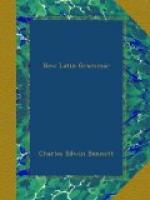haud aliter ac, not otherwise than.
d) neque (nec) means and not, neither, nor.
2. a) -que is an enclitic, and is appended always
to the second of two
words connected. Where it connects
phrases or clauses, it is appended to
the first word of the second clause; but
when the first word of the
second clause is a Preposition, -que is
regularly appended to the next
following word; as,—
ob eamque rem, and on account of that thing.
b) atque is used before vowels and consonants;
ac never before vowels,
and seldom before c, g, qu.
c) et non is used for neque when the emphasis
of the negative rests upon
a special word; as,—
vetus et non ignobilis orator, an old and not ignoble orator.
d) For and nowhere, and never,
and none, the Latin regularly said
nec usquam, nec umquam, nec ullus, etc.
3. Correlatives. Copulative Conjunctions are frequently used correlatively; as,—
et ... et, both ... and;
neque (nec) ... neque (nec), neither ... nor;
cum ... tum, while ... at the same time;
tum ... tum, not only ... but also.
Less frequently:—
et ... neque; neque ... et.
a. Note that the Latin, with its
tendency to emphasize antithetical
relations, often uses correlatives, especially
et ... et, et ... neque,
neque ... et, where the English employs
but a single connective.
4. In enumerations—
a) The different members of a series may
follow one another without
connectives (Asyndeton; see Sec. 346).
Thus:—
ex cupiditatibus odia, discidia,
discordiae, seditiones, bella
nascuntur, from covetous
desires spring up hatred, dissension,
discord, sedition, wars.
b) The different members may severally
be connected by et (Polysyndeton).
Thus:—
horae cedunt et dies et menses
et anni, hours and days and months and
years pass away.
c) The connective may be omitted between
the former members, while the
last two are connected by -que (rarely
et); as,—
Caesar in Carnutes, Andes
Turonesque legiones deducit, Caesar leads
his legions into the territory
of the Carnutes, Andes, and Turones.
342. Disjunctive Conjunctions indicate an alternative.
1. a) aut must be used when the alternatives are mutually exclusive; as,—
cita mors venit aut victoria
laeta, (either) swift death or glad
victory comes.
b) vel, -ve (enclitic) imply a choice between the alternatives; as,—
qui aether vel caelum nominatur, which is called aether or heaven.




